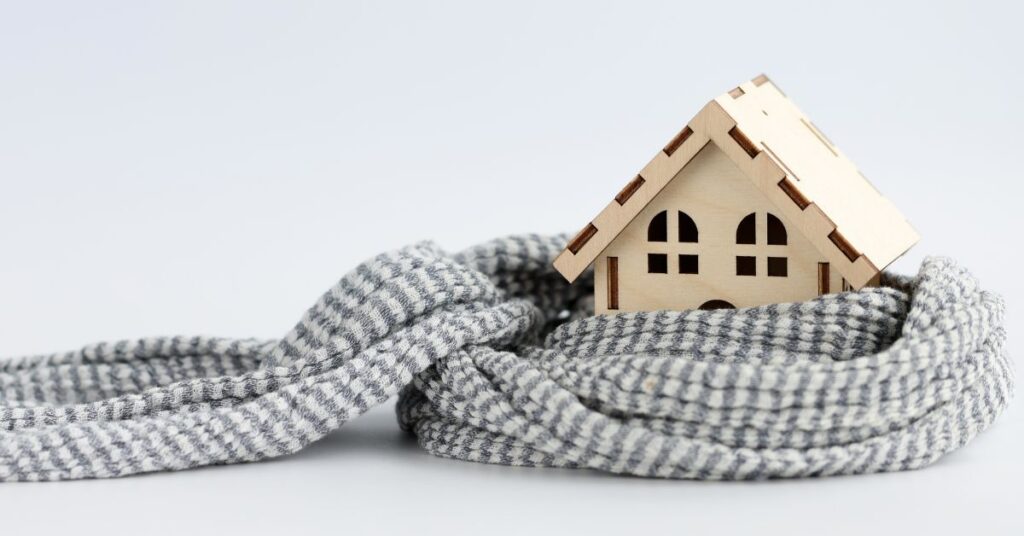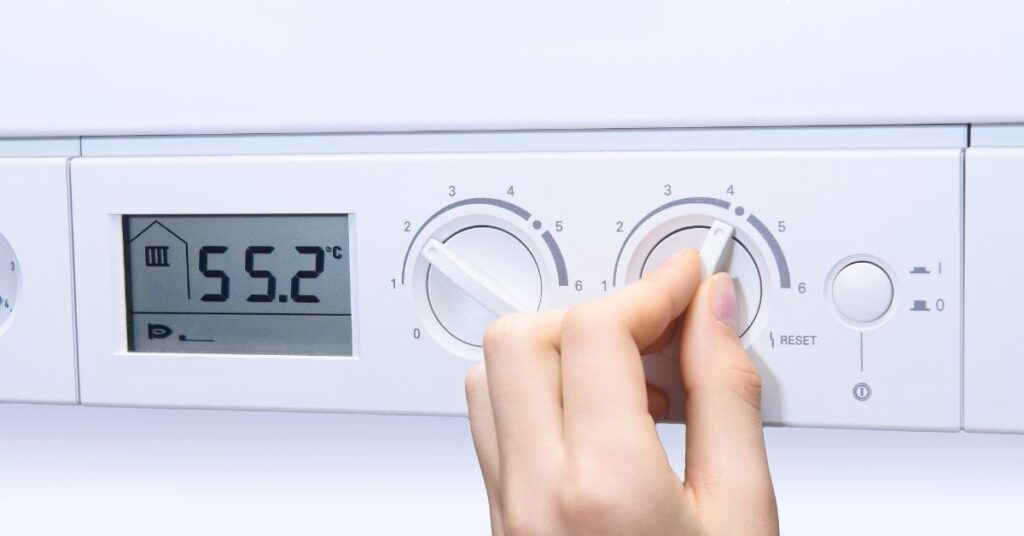Best Temperature For House: Striking the Ideal Balance
Finding the Best Temperature For House is a bit like walking a tightrope. Lean too much one way, and you’re shivering; too much the other, and your energy bill skyrockets. Let’s explore how to maintain that perfect equilibrium, ensuring your home is a haven of comfort regardless of the season.
Best Temperature For House In Winter
The best Temperature For House In Winter is ideally set at 68°F (20°C) during active hours, lowered to 66-62°F (19-17°C) for sleep, and around 50-60°F (10-15.5°C) when away from home.
Let’s kick things off with winter, where the challenge is to stay warm without turning your home into a sauna.
Winter Wonderland: Crafting Cozy Indoors 🌨️
- Daytime Delight: When you’re bustling about at home, 68°F (20°C) hits the sweet spot. It’s warm enough to keep the chills at bay without pushing your heating system to the max.
- Nighttime Nod Off: As you snuggle under the covers, dial it down to between 66°F and 62°F (19-17°C). This cooler setting promotes better sleep and saves energy.
- Out and About: Not home? Set your thermostat to 50-60°F (10-15.5°C). It’s just warm enough to prevent your pipes from freezing.

Tips for Toasty Times
- Layer Like a Pro: Embrace the art of layering. A cozy sweater and warm socks can be your best friends.
- Sunshine Savings: Use natural sunlight to your advantage. Open those curtains and let the sun work its magic.
- Blanket Bliss: Pile on the blankets for an extra layer of snugness.
Best Temperature For House In Summer
The best Temperature For House In Summer is generally set at 78°F (25°C) when you’re home and active, slightly higher during sleep for natural cooling, and around 85°F when the house is empty.
Now, let’s switch gears to summer. Here, the aim is to stay cool without turning your house into an igloo.
Summer Breeze: Cool Comfort ☀️
- Daytime Cool: When you’re home, 78°F (25°C) is ideal. It’s comfortably cool but not overly chilly.
- Night Whispers: As you drift off to dreamland, a slightly higher setting than the daytime norm is recommended. This helps your body cool down naturally.
- Gone with the Wind: Not around? Crank it up to 85°F. Your plants and furniture won’t mind, and you’ll save on energy.
Beating the Heat
- Cross Ventilation Mastery: Open windows to create a refreshing breeze.
- Shade Savvy: Close blinds to keep out that scorching sun.
- Fan-Tastic Strategies: Ceiling fans can be a game-changer, offering a cool breeze without a hefty price tag.
The Science of Comfort
Understanding the relationship between temperature, energy consumption, and health is crucial. Let’s delve into the numbers with a couple of handy tables.
Table 1: Temperature, Energy, and Health – Finding Balance
| Temperature Range | Energy Consumption | Health Considerations |
| Cool & Efficient (63-68°F / 17-20°C) | Lower | Ideal for most but chilly for some |
| Comfort Zone (68-78°F / 20-25°C) | Moderate | Optimal for general health |
| Warm & Cozy (78-82°F / 25-28°C) | Higher | Potential sleep and skin issues |
Table 2: Age & Temperature Preferences – A Closer Look
| Age Group | Preferred Temperature |
| Children & Infants | 68-72°F (20-22°C) |
| Elderly | 70-75°F (21-24°C) |
| Teenagers | 65-70°F (18-21°C) |
Advanced Comfort: Beyond the Basics
Once you’ve nailed the basics, it’s time to elevate your home’s comfort level.
- Smart Thermostat Wizardry: These devices can learn your habits and adjust temperatures automatically.
- Humidity Heroes: Keeping humidity in check enhances comfort.
- Sealing and Insulation: A well-sealed and insulated home is a fortress against temperature swings.
Seasonal Settings: A Comparative Glance
Understanding the seasonal differences in temperature settings can guide you towards more informed decisions.
Table 3: Winter vs. Summer – A Comparative Study
| Season | Time of Day | Recommended Temperature (°F) | Recommended Temperature (°C) |
| Winter | Daytime | 68 | 20 |
| Summer | Daytime | 78 | 25.5 |
Maximizing Energy Efficiency: Smart Tips and Tricks
Now, let’s turn our focus to energy efficiency. After all, maintaining the Best Temperature For the House isn’t just about comfort; it’s about being smart with our energy usage.
Energy-Saving Strategies
- Thermostat Mastery: Lowering your thermostat by 10 degrees for 8 hours a day, say during work or sleep, can slash your energy bills. It’s all about finding that balance between comfort and efficiency.
- Location, Location, Location: The position of your thermostat matters. Keep it away from direct sunlight or drafts for the most accurate readings.
- Thermostat Choices: From smart to programmable, each thermostat type has its perks. Smart thermostats, in particular, offer the highest level of convenience and efficiency.
The Role of Home Maintenance
Maintaining your heating and cooling systems is like giving your car a regular oil change – it’s essential for optimal performance.
- Seal the Deal: Check for leaks around windows and doors. A little sealant can go a long way.
- Routine Check-Ups: Regular servicing of your systems ensures they run smoothly and efficiently.
- Blinds and Curtains: They’re not just for decoration. Use them wisely to control indoor temperatures.
Understanding Temperature Variations
Different times of the day call for different temperatures. Let’s break it down with some easy-to-follow tables.
Table 4: Winter Temperature Settings – Time-Based Guide
| Time of Day | Recommended Temperature (Fahrenheit) |
| Daytime (Active Hours) | 68°F |
| Nighttime (Sleeping Hours) | 58-60°F |
| Away (Work Hours or Out of House) | 58-60°F |
Table 5: Summer Temperature Settings – Beat the Heat
| Time of Day | Recommended Temperature (Fahrenheit) |
| Daytime (Active Hours) | 78°F |
| Nighttime (Sleeping Hours) | 80°F |
| Away (Work Hours or Out of House) | 85°F |
These tables highlight the potential for energy savings while keeping comfort in check.
Individual Comfort: Tailoring to Your Needs
While we’ve talked about general guidelines, it’s important to remember that comfort is personal. What works for one may not work for another.
- Elderly and Infants: They may require a warmer setting. Adjust accordingly to ensure their comfort and safety.
- Health Conditions: Certain health issues might necessitate specific temperature settings. Always prioritize health over arbitrary numbers.
Seasonal Adjustments: A Year-Round Strategy
Adapting your home’s temperature as the seasons change is key to maintaining the Best Temperature For the House all year round.
- Transitioning Seasons: Gradually adjust the indoor temperature as seasons change. This helps your body acclimate and also saves energy.
- Seasonal Servicing: Service your heating system in fall and your cooling system in spring. This ensures they’re in top shape for the coming season.
Advanced Home Upgrades
Looking to take things up a notch? Consider these upgrades for enhanced comfort and efficiency.
- Windows and Insulation: Upgrading to energy-efficient windows and improving insulation can significantly reduce energy loss.
- HVAC Upgrades: Investing in a modern, energy-efficient heating and cooling system can offer long-term savings and improved comfort.
Beyond Temperature: Creating an Ideal Home Environment
It’s not just about the temperature. Creating a comfortable home environment involves a holistic approach.
- Lighting: Natural light can positively impact your mood and reduce the need for artificial lighting.
- Indoor Plants: They not only beautify your space but also improve air quality.
- Aesthetic and Functionality: Your home should be a reflection of your style and cater to your lifestyle needs.
Final Thoughts on Best Temperature For House
Finding the Best Temperature For your House is a dynamic process. It involves understanding your personal needs, being mindful of energy consumption, and adapting to the changing seasons. By employing the tips and strategies discussed, you can create a comfortable, efficient, and welcoming home environment.
Remember, the right temperature setting is not just a number on the thermostat. It’s about creating a space where you feel relaxed, healthy, and at ease, all while being mindful of your energy footprint. So, experiment within the guidelines, adjust as needed, and enjoy the comfort of your perfectly tempered home.
